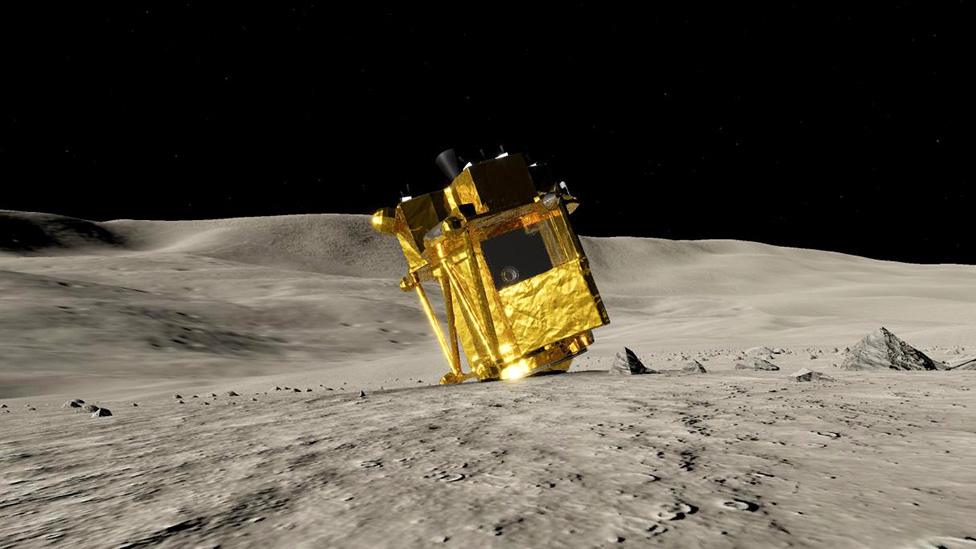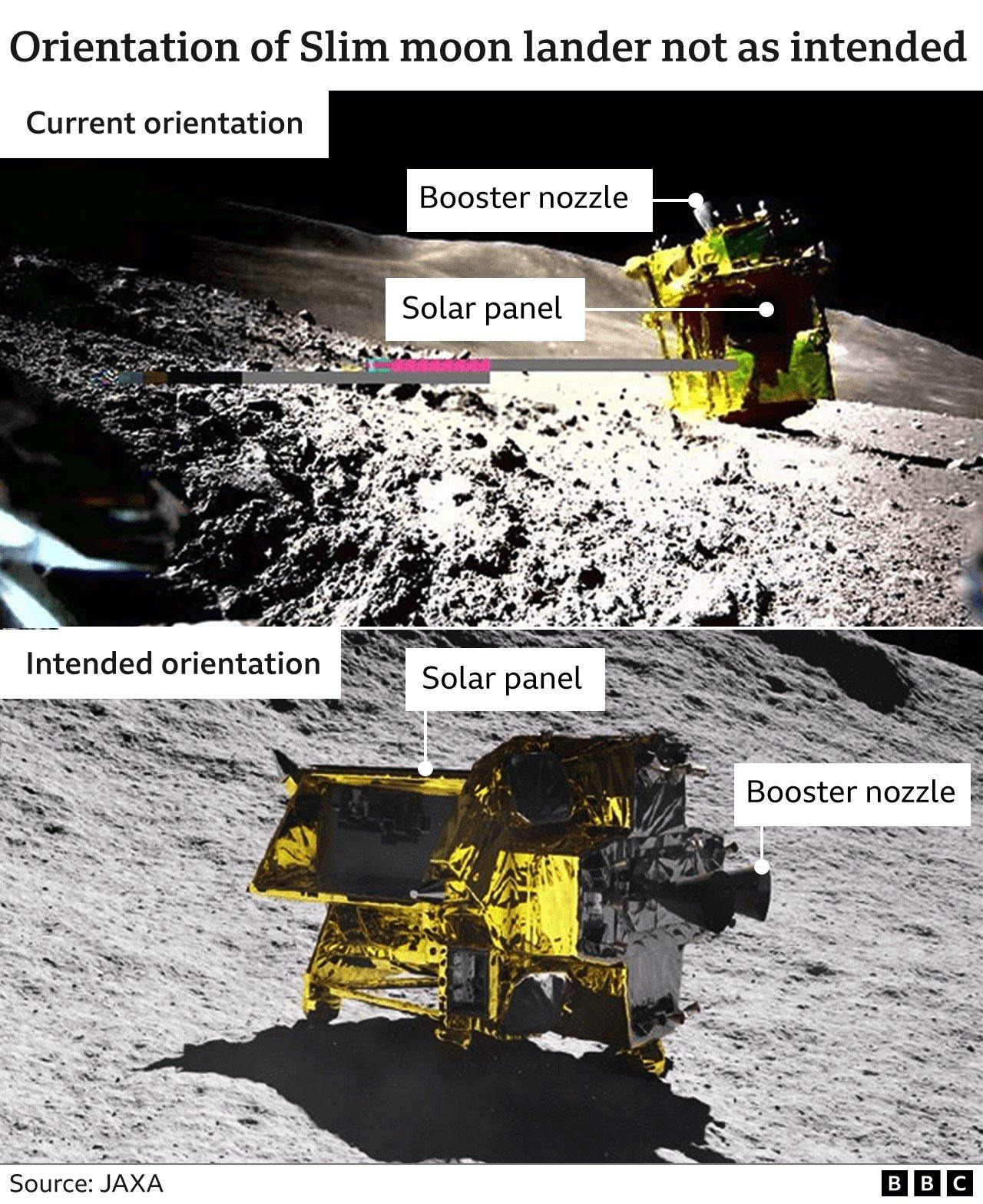Japan Moon lander survives lunar night
- Published

Jaxa produced this render of Slim to show the awkward landing orientation that pointed the solar cells away from the Sun
Japan's Moon lander has survived the harsh lunar night, the sunless and freezing equivalent to two Earth weeks.
"Last night, a command was sent to #SLIM and a response received," national space agency Jaxa said on X.
The craft was put into sleep mode after an awkward landing in January left its solar panels facing the wrong way and unable to generate power.
A change in sunlight direction later allowed it to send pictures back but it shut down again as lunar night fell.
Jaxa said at the time that Slim (Smart Lander for Investigating Moon) was not designed for the harsh lunar nights.
It said it planned to try to operate again from mid-February, when the Sun would shine again on Slim's solar cells.
"The news that Slim has rebooted itself after the cold lunar night is significant," said Dr Simeon Barber from the UK's Open University. "Surviving lunar night is one of the key technological challenges to be overcome if we are to establish long-lived robotic or human missions on the Moon."
Dr Barber explained that Slim landed near the Moon's equator, where the lunar surface reaches more than 100C at noon, but then plunges to -130C during the lunar night.
Jaxa said that communication with the lander was terminated after a short time - it was lunar midday, meaning the temperature of the communications equipment was very high.
But it posted the following picture on X, which it said was taken from the lander while it was back in action.
Allow X content?
This article contains content provided by X. We ask for your permission before anything is loaded, as they may be using cookies and other technologies. You may want to read X’s cookie policy, external and privacy policy, external before accepting. To view this content choose ‘accept and continue’.
Jaxa said preparations were being made to resume operations when instrument temperatures had cooled sufficiently.
During its previous brief period of re-awakening, Slim was able to study its surroundings in detail and transmit new images to Earth.
Jaxa will be hoping that having survived the lunar night it will be able to continue its work.

From a commercial moon mission by Intuitive Machines to Nasa's mini helicopter on Mars: 9 amazing space missions.

Dr Barber said that future landers would need so-called "active thermal control" - that is the ability to dissipate heat generated on board during the daytime, and then to change into a heat-conserving mode at night to prevent things getting too cold.
"The fact that Slim survived without such a complex design might give us clues as to how electronics really behave on the Moon," he said. "Plus, we can look forward to more science from Slim!"

The landing in January made Jaxa only the fifth national space agency to achieve a soft touchdown on the Moon - after the US, the former Soviet Union, China and India.
Also in a post on X, Jaxa congratulated the team behind a US spacecraft, the Odysseus Moon lander, for making history on Thursday by becoming the first ever privately built and operated robot to complete a soft lunar touchdown.
Like Slim, it also landed awkwardly. Controllers at the operating company, Intuitive Machines, think their robot tipped on to its side at the moment of touchdown. Odysseus does, however, appear still to be functional and is communicating with Earth.
No pictures from the Odysseus mission at the surface have yet been released.